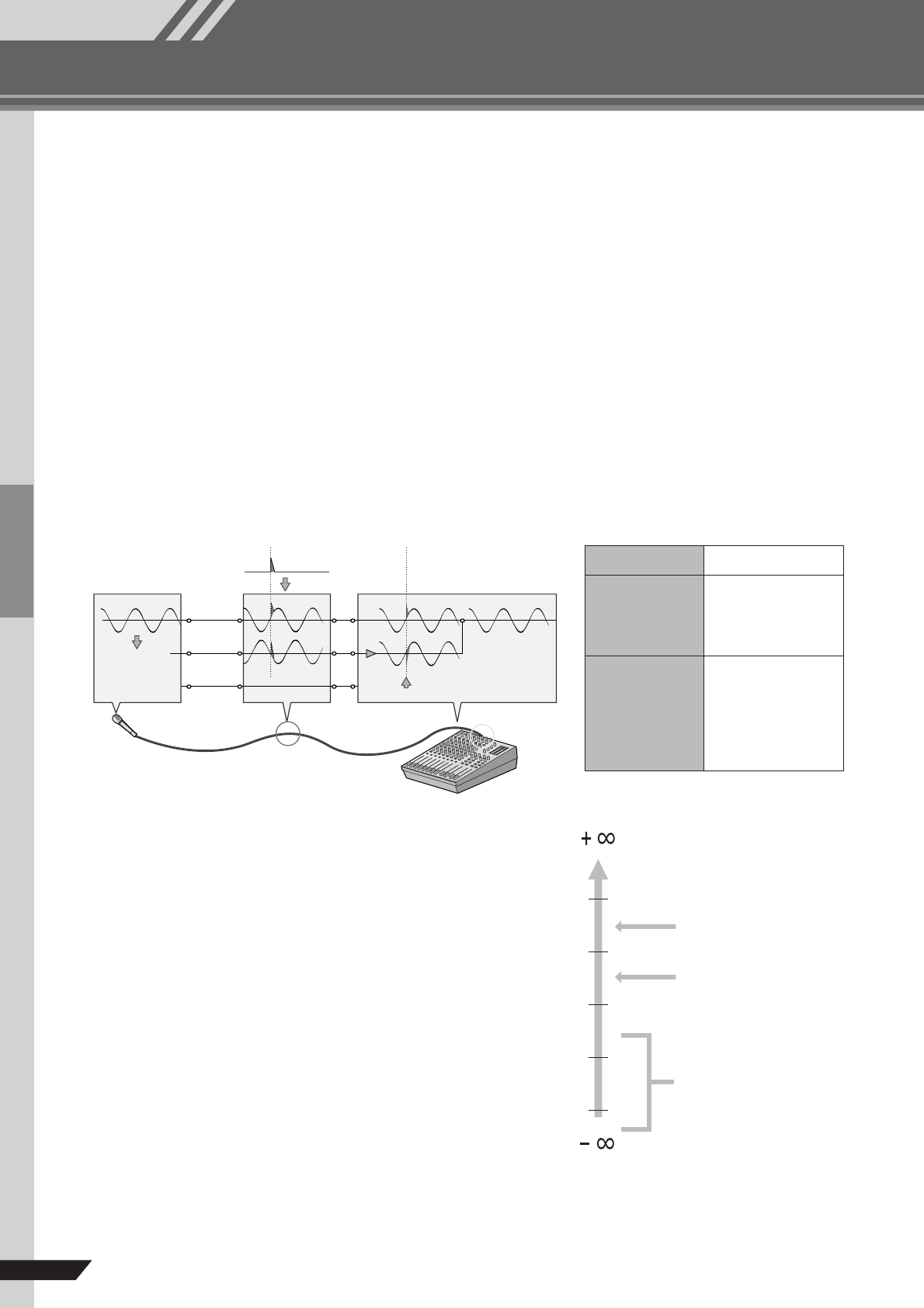
8
Mixer Basics
MG124CX/MG124C Owner’s Manual
Making the Most of Your Mixer
You’ve got yourself a mixer and now you’re ready to use it.
Just plug everything in, twiddle the controls, and away you go … right?
Well, if you’ve done this before you won’t have any problems, but if this is the first time you’ve
ever used a mixer you might want to read through this little tutorial and pick up a few basics
that will help you get better performance and make better mixes.
Balanced, Unbalanced—What’s the Difference?
In a word: “noise.” The whole point of balanced lines is noise rejection, and it’s something they’re very good at.
Any length of wire will act as an antenna to pick up the random electromagnetic radiation we’re constantly
surrounded by: radio and TV signals as well as spurious electromagnetic noise generated by power lines,
motors, electric appliances, computer monitors, and a variety of other sources. The longer the wire, the more
noise it is likely to pick up. That’s why balanced lines are the best choice for long cable runs. If your “studio” is
basically confined to your desktop and all connections are no more than a meter or two in length, then
unbalanced lines are fine—unless you’re surrounded by extremely high levels of electromagnetic noise.
Another place balanced lines are almost always used is in microphone cables. The reason for this is that the
output signal from most microphones is very small, so even a tiny amount of noise will be relatively large, and
will be amplified to an alarming degree in the mixer’s high-gain head amplifier.
Signal Levels and the Decibel
Let’s take a look at one of the most commonly used units in
audio: the decibel (dB). If the smallest sound that can be heard
by the human ear is given an arbitrary value of 1, then the
loudest sound that can be heard is approximately 1,000,000
(one million) times louder. That’s too many digits to deal with
for practical calculations, and so the more appropriate
“decibel” (dB) unit was created for sound-related
measurements. In this system the difference between the
softest and loudest sounds that can be heard is 120 dB. This
is a non-linear scale, and a difference of 3 dB actually results
in a doubling or halving of the loudness.
You might encounter a number of different varieties of the dB:
dBu, dBV, dBM and others, but the dBu is the basic decibel
unit. In the case of dBu, “0 dBu” is specified as a signal level of
0.775 volts. For example, if a microphone’s output level is –40
dBu (0.00775 V), then to raise that level to 0 dBu (0.775 V) in
the mixer’s preamp stage requires that the signal be amplified
by 100 times.
A mixer may be required to handle signals at a wide range of levels, and it is necessary match input and output
levels as closely as possible. In most cases the “nominal” level for a mixer’s input and outputs is marked on the
panel or listed in the owner’s manual.
Noise cancelled
Balanced noise cancellation
Noise
Hot (+)
Ground
Cold (–)
Receiving device
Phase
inversion
Noise-free
signal
Phase
inversion
Source
Cable
To summarize
Microphones: Use balanced lines.
Short line-level
runs:
Unbalanced lines
are fine if you’re in a
relatively noise-free
environment.
Long line-level
runs:
The ambient
electromagnetic
noise level will be
the ultimate
deciding factor, but
balanced is best.
+ 20 dBu
0 dBu
0.775 V
-
20 dBu
-
40 dBu
-
60 dBu
The inputs and outputs on
home-use audio gear
usually have a nominal level
of –10 dBu.
Most professional mixers,
power amplifiers, and other
types of equipment have
inputs and outputs with a
nominal level of +4 dBu.
Microphone signal levels
vary over a wide range
depending on the type of
microphone and the source.
Average speech is about
–30 dBu, but the twittering
of a bird might be lower than
–50 dBu while a solid bass
drum beat might produce a
level as high as 0 dBu.


















